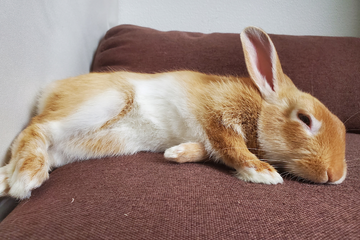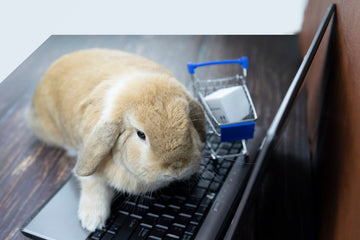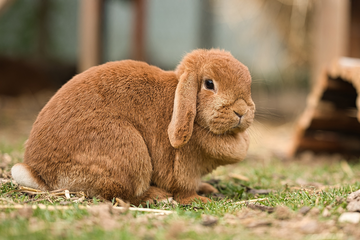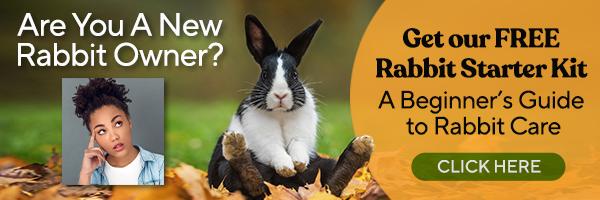Rabbit Ownership Expenses: What to Expect
Bringing a rabbit home for the first time feels like a simple, low-key way to add a pet to your life. No barking, no midnight walks, and no yard needed. But here's the surprise—those little hops can come with big costs. Whether you're planning for your first rabbit or figuring out why your budget's been stretched since your bun arrived, understanding rabbit ownership expenses is a game-changer.
Click Here For a Beginners Guide to Rabbit Care.

Let's break it all down so you know exactly what to expect—and how to make wise choices that keep your rabbit healthy without draining your wallet.
The Cost of Setting Up a Rabbit's Home
Most people underestimate how much the first few days with a rabbit can cost. The shopping list isn't huge, but the quality of your purchases matters more than you think. Rabbits need space, comfort, and stimulation from day one.
Start with a roomy habitat. Exercise pens are a favorite among experienced owners because they give bunnies freedom while staying safe indoors. A good setup runs between $120 and $250. Add in a litter box, hay feeder, water container, hideout, and food dish, and you're looking at another $60 to $100. Bedding can cost about $10 to $30, depending on your choice of material.
Toys are another must-have. A bored rabbit is a destructive rabbit. Puzzle toys, chew sticks, cardboard hideouts, and tunnels will cost around $25 to $50 to start.
Recurring Rabbit Ownership Expenses You'll See Every Month
Once your bunny is settled, the daily care becomes the real financial rhythm. Your rabbit's diet is the most significant piece of this puzzle—and not one you want to skimp on.
Hay is the number one staple. A healthy adult rabbit should have unlimited access to fresh hay, costing around $20 to $40 per month, especially if you're feeding premium Timothy Hay. Pellets are cheaper, averaging $5 to $15 monthly. Then you have fresh greens, which can add another $15 to $25 depending on your rabbit's size and your region.
Don't forget litter. Paper-based litter is safe and absorbent, costing around $15 to $25 monthly. Cleaning products, like white vinegar and wipes, may only cost a few dollars but are often overlooked in budget plans.
Veterinary Visits: Routine and Emergency Costs
Rabbits require more than just food and space. They need medical care, just like cats and dogs. Routine checkups with an exotics vet can cost $60 to $100. These annual visits are essential for spotting health issues early.
One of the biggest one-time costs? Spaying or neutering. Depending on your vet and location, this procedure typically ranges from $150 to $400. While it might feel steep, it can significantly reduce the risk of reproductive cancers and unwanted behaviors.
Emergencies are where things can get rough. GI stasis, dental problems, or injuries can result in vet bills from $200 to $1000. It's smart to build a small emergency fund or consider pet insurance options that include exotic animals like rabbits.
Grooming, Nail Trims, and Fur Management
Rabbits don't need regular baths (in fact, they shouldn't be bathed at all), but grooming is still essential. Depending on the breed, some rabbits shed heavily during molting seasons and require brushing several times a week.
Basic grooming tools like brushes, nail clippers, and de-shedding combs cost about $15 to $30 upfront. If you're uncomfortable trimming your rabbit's nails, many vets and groomers offer the service for $10 to $25 per visit. Long-haired breeds like Angoras may need professional grooming more often.
The True Cost of Rabbit Ownership Expenses Over Time
So how much are you really spending each year? You could easily spend between $1000 and $1500 in the first year alone. After that, recurring expenses like food, litter, and vet visits keep annual costs between $500 and $800 for most owners.
If you add upgrades like a new cage, higher-end hay, or travel carriers, the budget grows. And remember—rabbits live 8 to 12 years. Multiply those costs, and it's clear that rabbits, while small, aren't "cheap pets".

Rabbit Ownership Expenses: Where to Save Without Compromising
There are ways to lower rabbit care costs without cutting corners on health or happiness. Buying hay in bulk from trusted retailers like Rabbit Hole Hay can save you money over time. Reusing cardboard boxes and making DIY tunnels and toys cuts entertainment costs dramatically.
Choosing washable fleece liners instead of disposable bedding may have a higher upfront cost but will save you money in the long run. You'll also reduce waste, which is a win for your wallet and the planet.
Consider an internal guide like our article on rabbit size and weight to help match your bun's needs to portion sizes and housing options. Overspending on supplies that don't fit your rabbit's needs can be a silent budget killer.
Budgeting for Housing Upgrades and Space
As your rabbit ages—or if you adopt a bonded pair—you may find your original cage setup no longer works. Rabbits need room to stretch, run, and stand up. That starter pen may need expanding or replacing.
Upgraded indoor playpens or full-room conversions can range from $100 to $400, depending on materials. If you go the outdoor hutch route, expect even higher costs. Weatherproof hutches can run from $200 to over $600. And that's before adding a secure run or predator-proof fencing.
Soft flooring for play areas, like foam mats or rugs, adds another $30 to $75, depending on your space. Remember that rabbits love to chew, so anything you add must be safe and chew-resistant.
When You Bond Two Rabbits… Double the Costs?
Many rabbit owners eventually bond their bun with a companion. Rabbits are social animals and can thrive in pairs—but bonding doesn't come free. You'll need a second set of everything during the bonding period: cage, litter box, food dishes, toys, and more.
Double the food, double the hay, double the vet visits. Some costs, like litter and toys, can be shared. But overall, expect your monthly expenses to increase by 50 to 100% depending on how closely bonded the rabbits become.
Budgeting for professional help is also wise if bonding proves difficult. Some rabbit-savvy rescues or trainers offer bonding services, which may cost $75 to $200, depending on your area.

Lifestyle Factors That Affect Rabbit Ownership Expenses
Where you live makes a big difference in rabbit care costs. Urban areas tend to have higher vet bills and pricier hay and vegetables. Suburban or rural owners may have access to farmers markets or direct hay suppliers at a lower cost.
Your lifestyle also matters. Travel frequently? You'll need a reliable bunny sitter or boarding facility, ranging from $15 to $40 per night. Working from home? You might save money by catching issues early and doing more hands-on grooming and care.
Even your home layout can have an impact. Open floor plans with minimal separation might require extra baby gates or room dividers to safely rabbit-proof your living space.
Budgeting Tips to Keep Rabbit Ownership Sustainable
Once you understand what goes into rabbit ownership expenses, it's easier to plan ahead. Here are some smart ways to stretch your bunny budget:
Buy in bulk: Hay, pellets, and litter all come at a discount in larger sizes. Just make sure you store them properly to avoid spoilage.
Get creative with toys: Toilet paper rolls, cardboard boxes, and old towels can become your rabbit's favorite things.
Use reusables: Washable fleece liners save hundreds over time compared to disposable bedding options.
Track expenses monthly: Knowing where your money goes helps you find places to cut back or prepare for future costs.
Invest in prevention: A healthy diet and early vet checkups cost less than emergency care later on.
Wrapping It Up: Are Rabbit Ownership Expenses Worth It?
There's no doubt that rabbits require an ongoing financial commitment. From their first hay nibble to their senior years, your rabbit depends on you for comfort, safety, and care. Yes, rabbit ownership expenses can surprise people—but those costs support a better life for your bunny.
If you're able to plan ahead, think practically, and invest wisely in your rabbit's needs, you'll find that the joy of rabbit companionship far outweighs the costs. It's not about having the cheapest pet. It's about giving your rabbit the best chance to thrive and become the best rabbit owner you can be.
Key Takeaways
Initial setup costs: Expect to spend $150 to $300 for a quality home and supplies.
Ongoing monthly expenses: Food, litter, and grooming can add up to $60–$100/month.
Veterinary care and emergencies: Budget for annual checkups and unexpected health needs.
Smart budgeting helps: Buying in bulk, going DIY with toys, and tracking costs makes ownership more affordable.
Want to dive deeper into care topics? Check out our internal blog on keeping rabbits cool in the summer—another hidden cost if you live in a warm climate.

Rabbit Sleep Patterns: What’s Normal and What to Watch For

Rabbit Hygiene: Essential Care Tips

Best Spot: Where Can I Buy Rabbit Food










